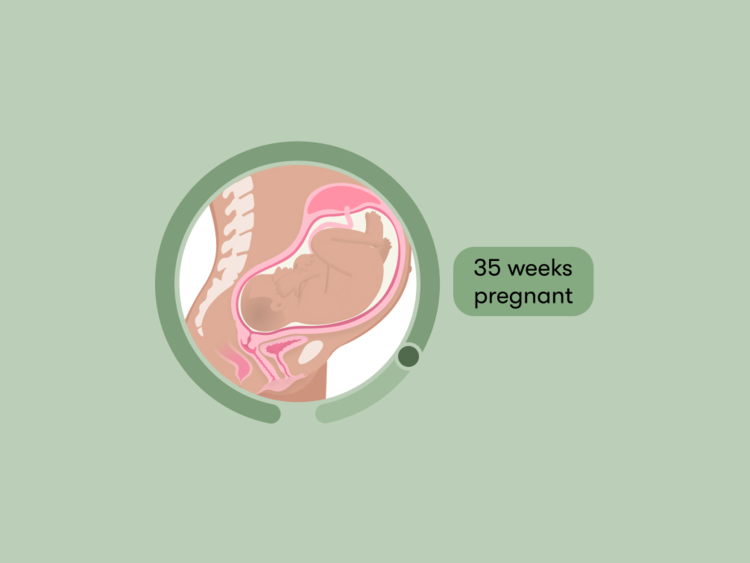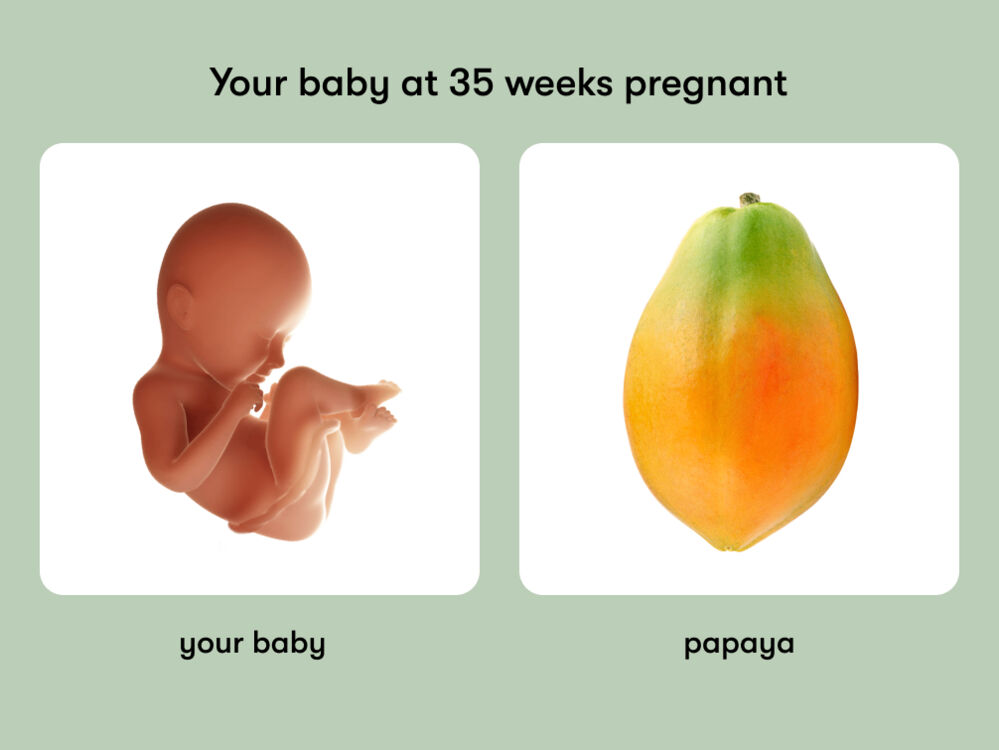At 35 weeks pregnant, it may feel like your due date is fast approaching. It’s normal to have mixed feelings right now. You might be excited to meet your little one, sad about nearing the end of your pregnancy, and nervous about birth and delivery all at once. It can certainly be an overwhelming time, especially if this is your first pregnancy. So however you’re feeling, be kind to yourself and know that all emotions — even conflicting ones — are perfectly valid.
Read on to hear advice from a Flo expert about the symptoms you may (or may not!) be experiencing at 35 weeks pregnant, plus lifestyle tips for a healthy pregnancy at this stage.
Your baby at 35 weeks pregnant
Baby is getting snug
By now, your baby is taking up lots of room in your uterus. It sure is getting cramped in there, but they’ll still be wiggling around. In fact, you should feel movements as strongly and regularly as in previous weeks. By 36 weeks, they’ll most likely have settled into their birthing position.
Baby has surfactant
At 35 weeks, it’s likely that your baby has produced enough of a substance called surfactant to be able to breathe well after birth. Never heard of it? Well, it’s a protein that’s key for healthy lungs. Your little one’s lungs will be fully developed very soon — by 36 weeks — and ready to take their first breath after birth.
How big is a baby at 35 weeks?
Length (crown to heel): 46.3 cm or 18.2 in
Weight: 2.6 kg or 5.7 lb
Size: Equivalent to a papaya
All measurements are approximate and vary within the normal range.



